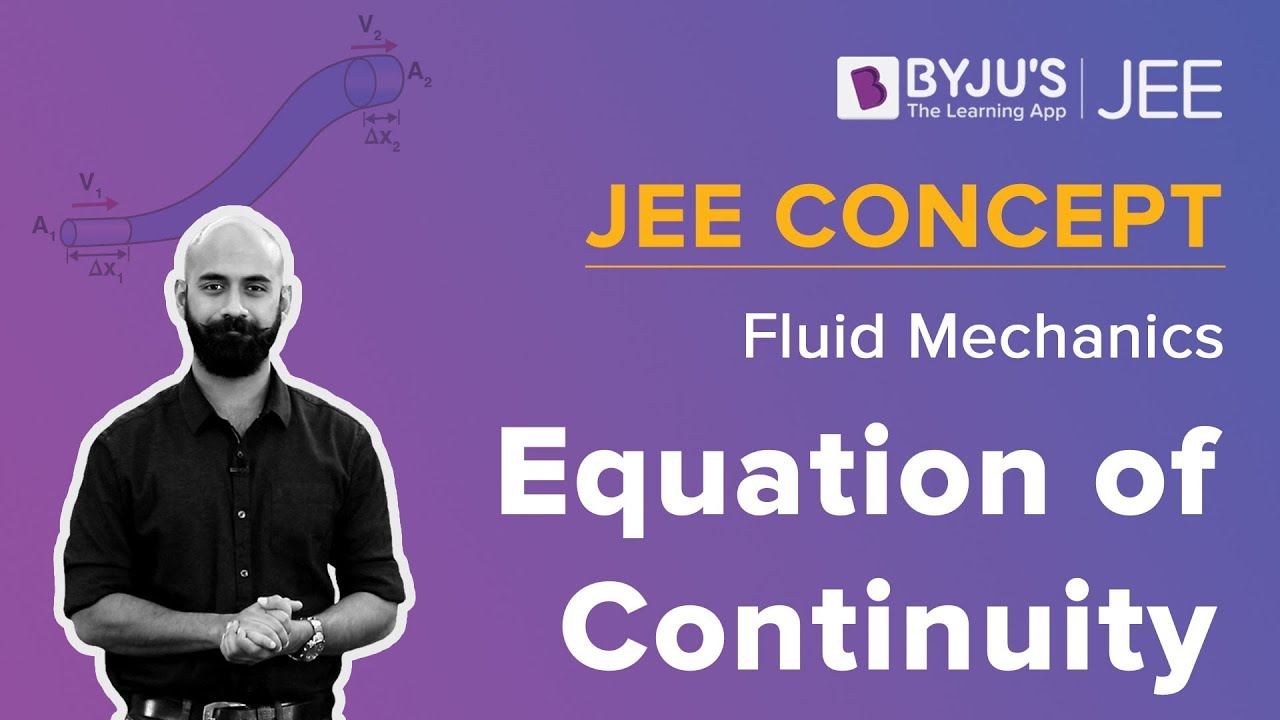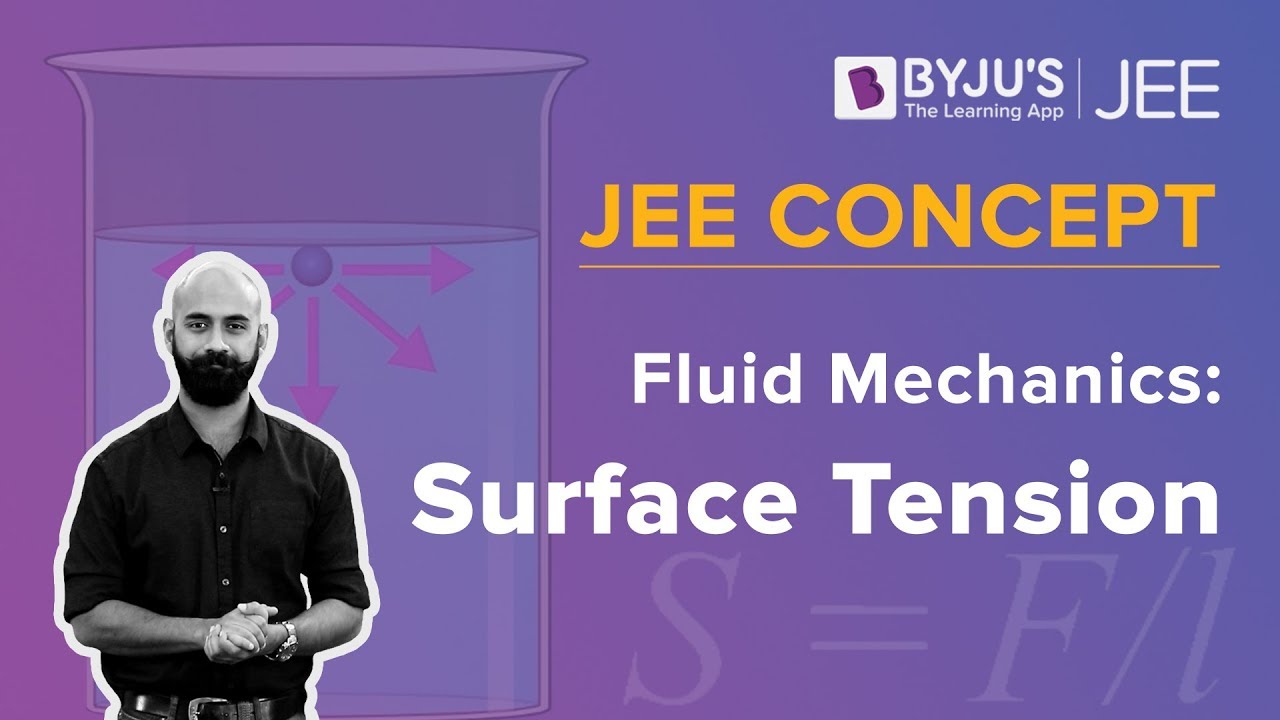Fluid mechanics could be defined as the division of engineering science which deals with the behaviour of the fluid in both motion and rest situations. It is one of the four divisions of mechanics namely quantum mechanics, relative mechanism, fluid mechanics and elastic body mechanics.
Fluid mechanics is separated into three distinct classes. These are statics, kinematics, and the dynamics out of which static and dynamics are then divided into a compressible and incompressible flow. These are furthermore split into turbulent and laminar forms.
Download Fluid Mechanics JEE Advanced Previous Year Questions With Solutions PDF
Question 1) A cylindrical vessel of height 500 mm has an orifice (small hole) at its bottom. The orifice is initially closed and water is filled in it up to height H. Now the top is completely sealed with a cap and the orifice at the bottom is opened. Some water comes out from the orifice and the water level in the vessel becomes steady with a height of the water column being 200 mm. Find the fall in height (in mm) of water level due to the opening of the orifice. [Take atmospheric pressure = 1.0 × 105 N/m2, density of water = 1000 kg/m3 and g = 10 m/s2. Neglect any effect of surface tension.]
Answer: 6
Solution:
P = P0 – ρgh = 98 × 103 N/m2
P0V0 = PV
105[(500 – H) A] = 98 × 103 [A(500 – 200)]
H = 206 mm
Level fall = 206 – 200 = 6mm
Question 2) Two soap bubbles A and B are kept in a closed chamber where the air is maintained at a pressure of 8 N/m2. The radii of bubbles A and B are 2 cm and 4cm, respectively. The surface tension of the soap-water used to make bubbles is 0.04 N/m. Find the ratio nB/nA, where nA and nB are the number of moles of air in bubbles A and B, respectively. [Neglect the effect of gravity]
Answer: 6
Solution:
(Pin)A = (4S/rA) + P0 = (4 × 0.04/0.02) + 8 = 16 N/m2
(Pin)B= (4S/rB) + P0 = (4 × 0.04/0.04) + 8 = 12 N/m2
nA = (Pin)AVA/RT
Question 3) An ideal fluid flows (laminar flow) through a pipe of non-uniform diameter. The maximum and minimum diameters of the pipes are 6.4 cm and 4.8 cm, respectively. The ratio of the minimum and maximum velocity of the fluid in this pipe is
(A) 9/16
(B) √3/2
(C) ¾
(D) 81/256
Answer: (A) 9/16
Solution:
From the equation of continuity
A1V1 = A2V2
Here V1 and V2 are the velocities at two ends of the pipe.
A1 and A2 are the area of pipe at two ends
Question 4) A large open tank has two holes in the wall. One is a square hole of side L at a depth y from the top and the other is a circular hole of radius R at a depth 4 y from the top. When the tank is completely filled with water, the quantities of water flowing out per second from both holes are the same. Then, R is equal to
(A) L/√2π
(B) 2πL
(C) L
(D) L/2π
Answer: (A) L/√2π
Solution:
As we know,
Velocity, V = √2gh
From the equation of continuity A1V1 = A2V2
⇒ L2 = 2πR2
Therefore, R = L/√2π
Question 5) The top of a water tank is open to the air and its water level is maintained. It is giving out 0.74 m3 water per minute through a circular opening of 2 cm radius in its wall. The depth of the centre of the opening from the level of water in the tank is close to
(A) 6.0 m
(B) 4.8 m
(C) 9.6 m
(D) 2.9 m
Answer: (B) 4.8 m
Solution
In flow volume = Outflow volume
⇒ (0.74/60) = (π × 4 × 10-4) x √2gh
√2gh = (74 × 100)/240π
√2gh = 740/24π
2gh = (740 × 740)/(24 × 24 × 10) [Since, π2 = 10]
⇒ h ≈ 4.8 m
Question 6) If the piston is pushed at a speed of 5 mm/s, the air comes out of the nozzle with a speed of
(A) 0.1 m/s
(B) 1 m/s
(C) 2 m/s
(D) 8 m/s
Answer: (C) 2 m/s
Solution:
Here, the piston is pushed at a speed, v1 = 5 m/s
Let air comes out of the nozzle with a speed v2
From the principle of continuity
a1v1 = a2v2
⇒ πr12v1 = πr22v2
⇒ r12v1 = r22v2
⇒ (20)2 × 5 = (1)2 × v2
v2 = 2000 mm/s
= 2 m/s
Question 7) A boat floating in a water tank is carrying a number of large stones. If the stones are unloaded into the water, what will happen to the water level?
Answer: When stones are put in water, the level of water falls
Solution:
When the stones were in the boat, the weight of the stones was balanced by the buoyant force.
Vsds = Vldl
Vl, Vs = volume of liquid and stone, respectively
dl, ds = density of liquid and stone, respectively
Since ds > dl : Vs < Vl
Therefore when stones are put in water, the level of water falls.
Question 8) A cube of wood supporting 200 gm mass just floats in water. When the mass is removed, the cube rises by 2cm. What is the size of the cube?
Answer: 10 cm
Solution:
Let the size or edge of the cube be l. When mass m = 200 g is on the cube of wood
200g + l3 dwood g = l3dwater g
⇒ l3dwood = l3dwater – 200 ——(i)
When the mass m = 200 g is removed
l3dwood = (l – 2)l2dwater ——-(ii)
From equation (i) and (ii)
l3dwater – 200 = (l-2)l2dwater
(since dwater = 1)
Therefore, l3 – 200 = l2(l – 2)
⇒ l = 10 cm
Question 9) A vessel contains oil (density = 0.8 gm/cm3) over mercury (density = 13.6 g/cm3). A homogeneous sphere floats with half its volume immersed in mercury and the other half in oil. The density of the material of the sphere in gm/cm3 is
(A) 3.3
(B) 6.4
(C) 7.2
(D) 12.8
Answer: (C) 7.2
Solution:
Weight of sphere = upthrust due to Hg = upthrust due to oil
Vdg = (V/2) dHg g + (V/2)doilg
⇒ d = (dHg + doil)/2
= (13.6 + 0.8)/2 = 7.2 g/cm3
Question 10) A body floats in a liquid contained in a beaker. The whole system as shown in the figure falls freely under gravity. The upthrust on the body is/are

(A) Zero
(B) Equal to the weight of the liquid displaced
(C) Equal to the weight of the body in air
(D) Equal to the weight of the immersed portion of the body
Answer: (A) Zero
Solution:
The whole system falls freely under gravity, so g = 0
According to Archimedes principle
Upthrust = weight of fluid displaced
= (mass of fluid displaced) × g
Therefore, upthrust = 0
Also Read:
Fluid Mechanics JEE Main Previous Year Questions With Solutions
Video Lessons
Equation of Continuity

Surface Tension

Comments